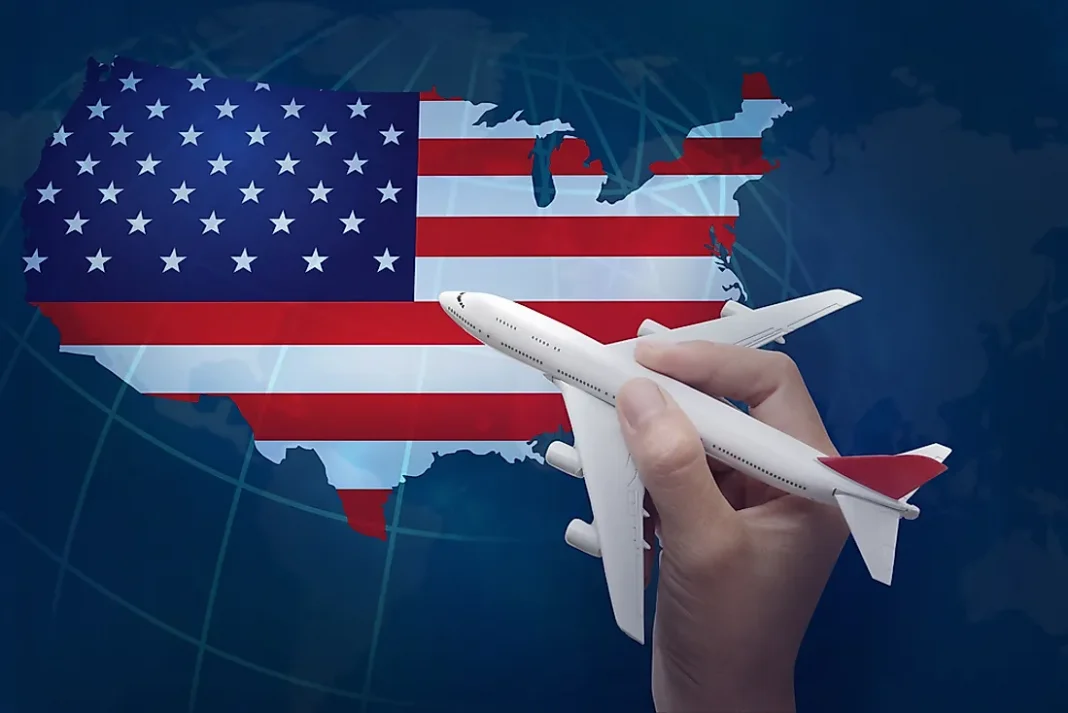If this is your first time traveling by air, you’re likely going to come across some terms that are new to you. But you need not feel bad about it. Many who have been traveling for years don’t know these terms, too.
For example, it wasn’t until my seventh time flying that I learned the accurate definitions and implications of terms like layovers, stopovers, transits, transfers, and many others. Before then, I used to mix ‘transit’ and ‘transfer’ up because I thought they meant the same thing.
In fact, let me tell you a quick story. I only recently knew one needed an ESTA application to make a stopover in the US. I always thought to myself that anytime I had business in any part of North America (be it Canada, Mexico, or what have you), I would make a stop at a connecting American airport to check the US out. Thank God I did a little research before embarking on my journey. If not, I would not have known ESTA is a must, and I would have been refused entry.
I’m happy you’ve come here to brush up on your air flight knowledge. So, without much ado, let’s get to it.
What is a layover?
Some people may have you believe that ‘layover’ and ‘stepover’ means roughly the same thing and that the former is American English while the latter is British English.
But that’s a far cry from the fact. As you’ll soon learn, a layover is very much different from a stopover.
In explicit terms, a layover is a kind of stop a plane makes at a connecting airport to drop off or pick up passengers, refuel, or gather supplies before heading to its final destination.
For example, say you’re going from country A to country C. A layover may arise in a case where your flight makes a stop at a connecting country B. In this case, the stop may be because your plane wants to pick up new passengers or make some operational fixes.
In any case, layovers usually last for less than 24 hours and are often included in your tickets.
On the flip side, layovers can be considered ‘inconvenient’ because they involve travelers going through an extra round of immigration checks at the connecting airport.
On the bright side, layover flights are usually cheaper than regular straightforward flights (although not in all cases) because of the inconvenience caused. So, choosing a layover flight might be a reasonable option when looking to hack air flight costs.
How long does a layover stop take?
Well, it depends. A layover can take less than thirty minutes or run up to six hours or more. But one thing is certain; no layover can run past 24 hours.
When layovers take around 30 minutes, it’s regarded as short layovers. This is common on domestic flights. However, it’s already a long layover when it takes up to two hours or more. Typically, you’ll experience such lengthy layovers on international travels. And the reason is to make room for travelers to claim their baggage (in case they’re changing flights) or go through the immigration processes.
Can you step out of the airport during a layover?
To be honest, why would you want to leave? Do you really think you can do or see much within a thirty-minute break?
But to answer your question, it’s a Yes and a No.
Yes, you can leave the airport during a layover, provided the connecting country’s immigration law permits free passage for in-transit travelers.
No, you won’t be able to leave if the country doesn’t allow free passage of in-transit travelers.
I know the US doesn’t. You’ll need an ESTA online visa to leave the airport and check out the surrounding cities. You should check the immigration law for the country you’re transiting through to know what their layover or in-transit immigration policies are.
What is a stopover?
Stopover is when a traveler makes a stop in a connecting city for more than 24 hours before continuing their journey. In general, stopovers take more than 24 hours – usually up to 3 days or more.
Usually, travelers book stopover passes separately because they’re never included in original flight tickets, unlike layovers. This means that if you wish to make a stopover in a connecting city before heading to your final destination, you’ll need to book a stopover voluntarily.
Why would someone want to make a stop for a few days in a connecting city before continuing their journey? To explore cities and discover places.
Usually, this is the allure for most travelers. A stopover flight allows you to check out different cities and cultures en route to your final destination. In a way, it’s like killing two birds with one stone. Instead of having to book a flight and plan a trip to a second country, you make a stop in the country while journeying to your first country of choice.
By and large, stopovers are great for sightseeing and explorations.
On the downside, stopover tickets are generally more expensive than regular tickets. However, if you look at the bigger picture, they’re still way more cost-effective than booking two straightforward flights to two separate destinations.
Can you step out of the airport on a stopover?
As with layovers, it’s a Yes and a No.
Yes, you can, if you’re traveling domestically or obtained the in-transit visa for the connecting country.
No, you can’t if the country hasn’t got a free in-transit visa scheme or if you haven’t got their transit visa.
So, if you intend to make a stopover in a connecting country, you should find out what their in-transit immigration policies are.
How can you score a free stopover flight?
As we’ve said, it costs extra to book yourself a stopover flight. However, there are ways to go about it if you don’t want to pay extra to visit two countries on one trip. You simply have to look for those airlines offering special Stopover Programs. Once you find such, you just have to book your flight tickets through their websites.
For example, if you’re traveling from Toronto to Paris, Tap Air Portugal permits you to convert your Lisbon layover into free multi-day stopovers.
To check for websites offering such programs, check your favorite airline’s website or simply Google search airlines offering free stopovers in the target country.





